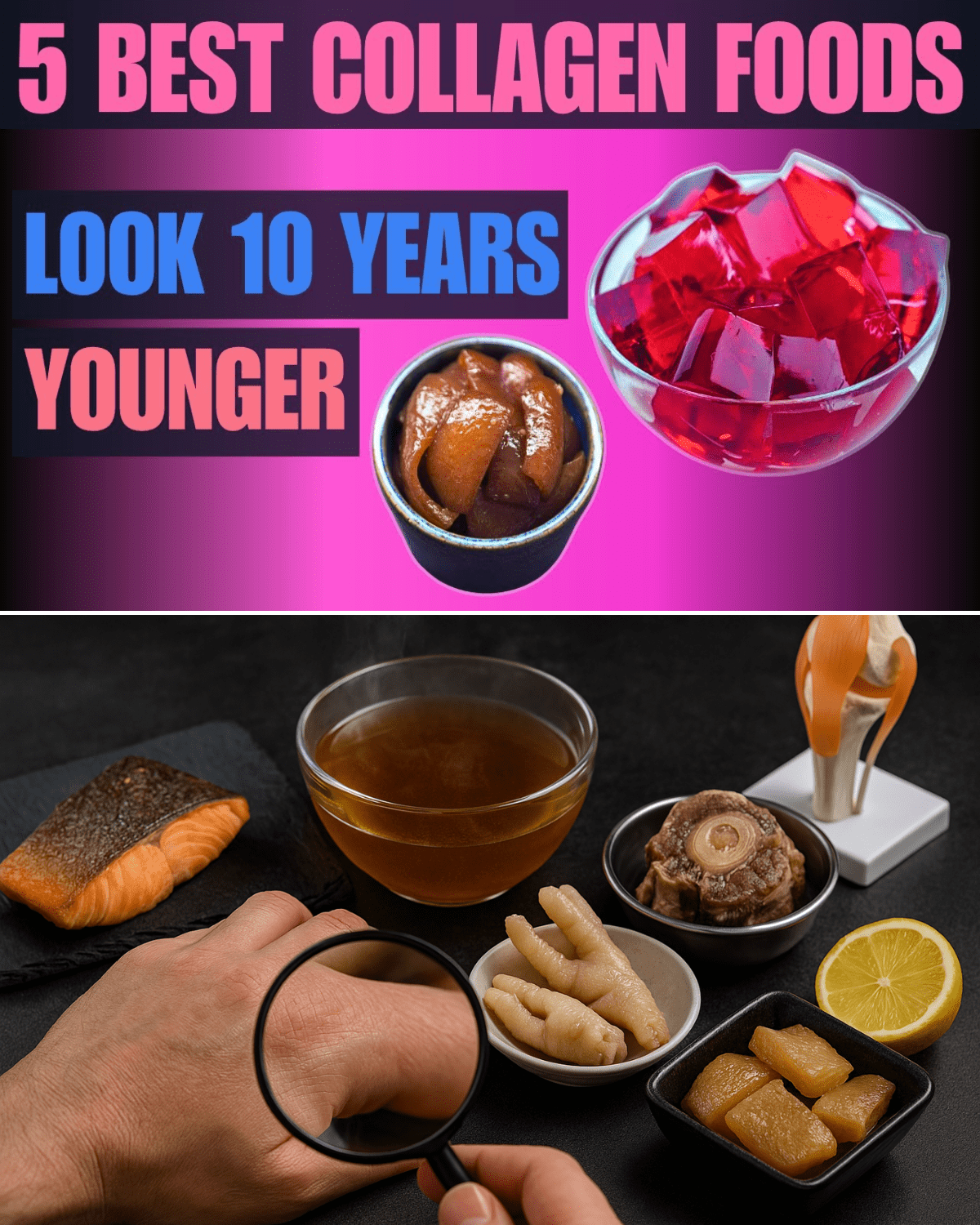Top 5 Foods That Make Your Skin Radiant from Within

Have you ever looked in the mirror and wished your skin could be plump and youthful again? The good news is, the secret doesn’t lie in expensive creams but right in your own kitchen. Here are 5 collagen-rich foods that can help support healthy, radiant skin—and they’re easy to add to your daily meals.
Why is Collagen Important?
Collagen is the “scaffolding” that keeps your skin firm, elastic, and hydrated. As we age, the body produces less collagen, leading to dryness, wrinkles, and sagging. Besides aging, poor diet, stress, and sun exposure also accelerate this process. The good news? You can boost your body’s natural collagen production with the right foods.
Top 5 Collagen-Rich Foods
5. Eggs
Eggs are rich in proline—an amino acid essential for collagen synthesis. Aim for 2–3 eggs a week, boiled, scrambled, or fried.
4. Berries (strawberries, blueberries, raspberries)
Loaded with vitamin C, a vital nutrient for collagen production. Enjoy a small bowl daily, mixed with yogurt or blended into a smoothie.
3. Bone Broth
Packed with natural collagen and glycine, bone broth helps improve skin elasticity and hydration. Drink a warm cup or use it as a soup base, 1–2 times per week.
2. Citrus Fruits (oranges, grapefruits, lemons)
Rich in vitamin C, they not only support collagen synthesis but also protect your skin from UV damage. Eat at least one citrus fruit daily, or simply add a lemon slice to your water.
1. Salmon
The star of the list! Salmon is full of omega-3 fatty acids and zinc—a powerful duo that helps reduce inflammation, protect collagen, and support skin repair. Eat 2–3 servings per week (about 100 g/3–4 oz each) for noticeable benefits.
A Few Extra Tips
-
Get enough sleep, drink plenty of water, and protect your skin from excess sun to preserve collagen.
-
Mix things up: eggs for breakfast, an orange at lunch, grilled salmon for dinner—small but lasting changes.
-
If you don’t eat fish, try nuts, beans, or plant-based supplements (always check with your doctor first).
Final Thoughts
Aging is natural, but you’re not powerless against time. With these 5 collagen-rich foods—eggs, berries, bone broth, citrus fruits, and salmon—you can nourish your skin from the inside out. Start with small adjustments to your weekly menu and be patient with the results.
This article is for informational purposes only and does not replace medical advice. Please consult your doctor before making dietary changes, especially if you have underlying health conditions.
 .
.























